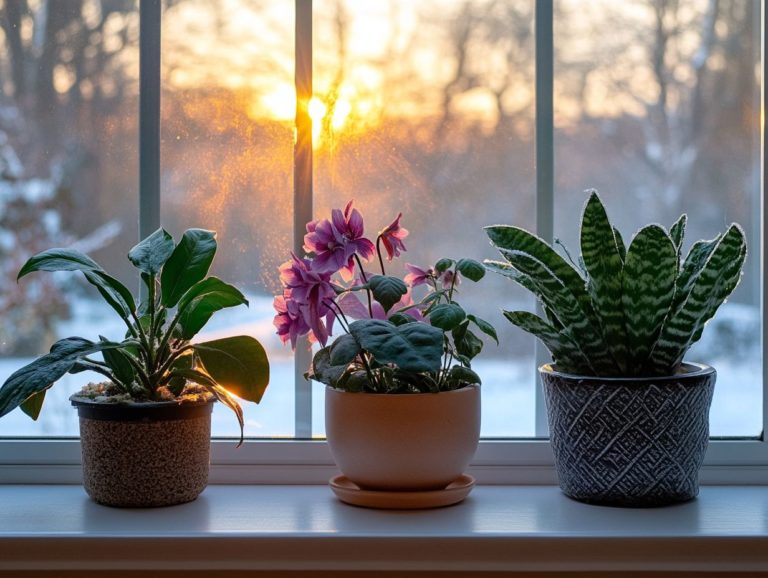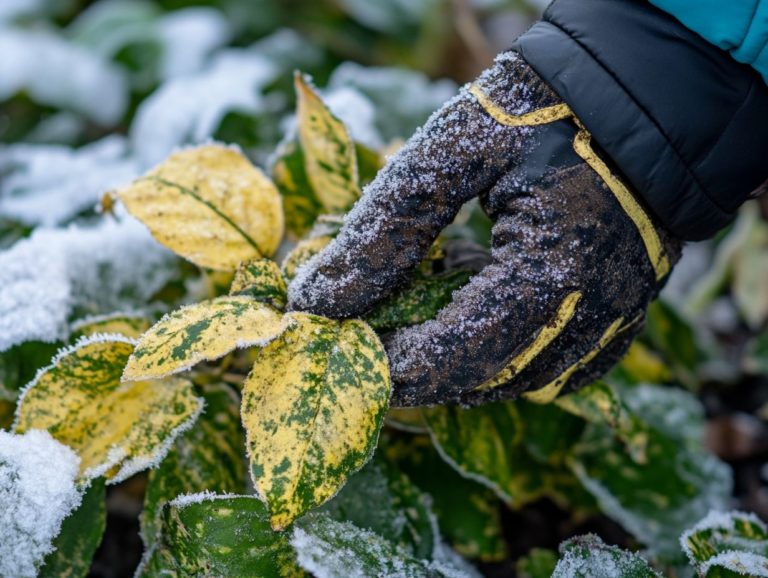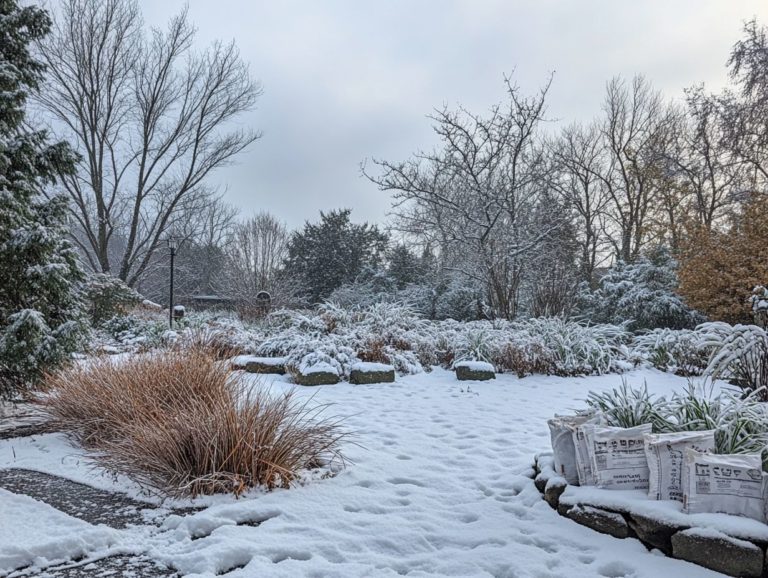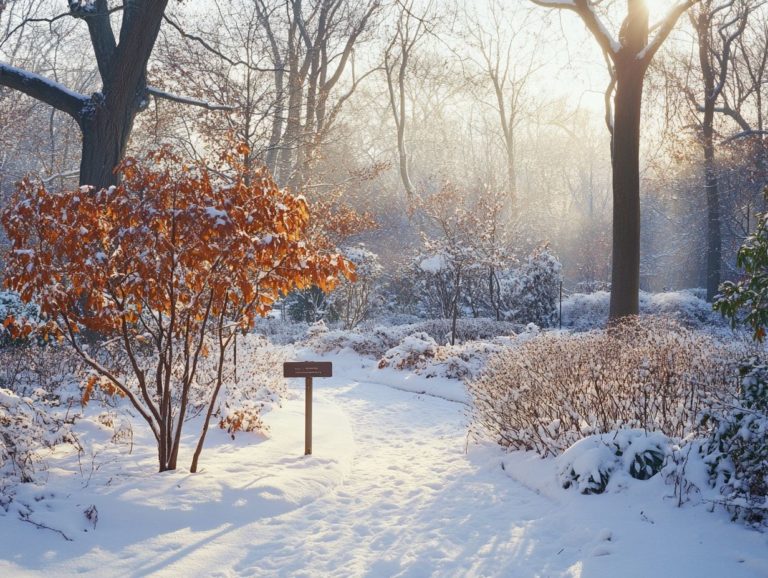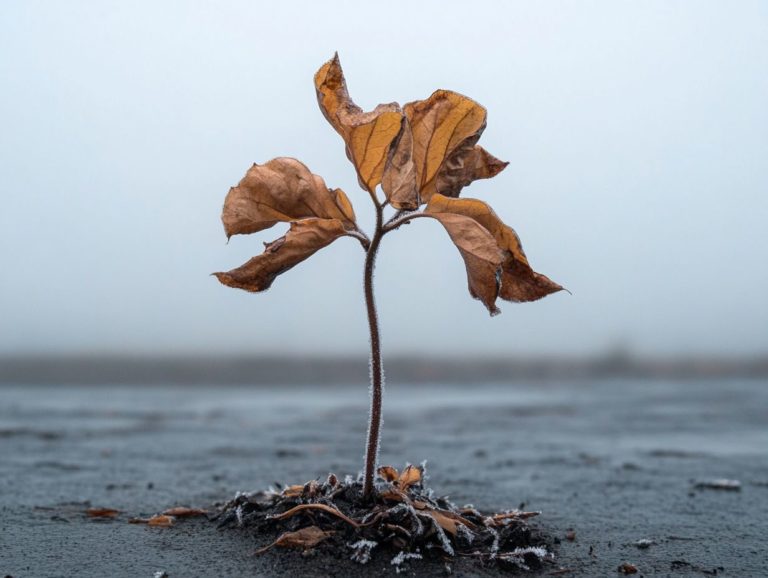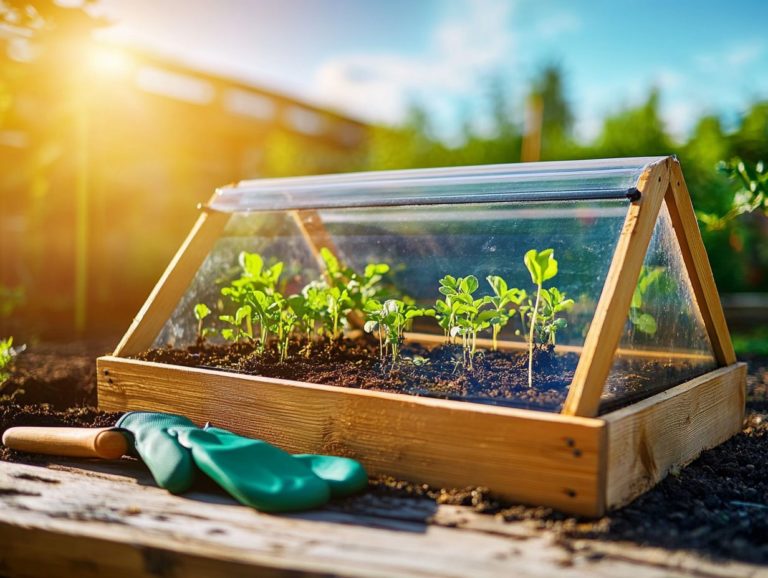What are the Best Native Plants for Cold Climates?
When it comes to gardening in colder regions, selecting the right plants is crucial for your success. Implementing raised beds also enhances your gardening efforts.
Choosing native plants that thrive in chilly environments not only beautifies your landscape but also provides significant environmental and economic benefits.
This guide helps you discover what makes a plant suitable for cold climates, showcases some of the finest hardy options, and provides tips on seamlessly incorporating and caring for these resilient botanicals in your garden, highlighting the importance of planting natives.
Discover how you can cultivate a vibrant, sustainable outdoor space that flourishes even in the frost.
Contents
- Key Takeaways:
- Understanding Cold Climate Native Plants
- Benefits of Using Native Plants
- Amazing Native Plants for Your Cold Climate Garden!
- How to Incorporate Native Plants in Your Landscape
- Caring for Native Plants in Cold Climates
- Frequently Asked Questions
- What are the Best Native Plants for Cold Climates?
- Why should I choose native plants for my cold climate garden?
- What are some examples of native plants for cold climates?
- Do native plants require any special care in cold climates?
- Can native plants attract wildlife to my cold climate garden?
- Are there any benefits to using native plants in cold climates?
Key Takeaways:
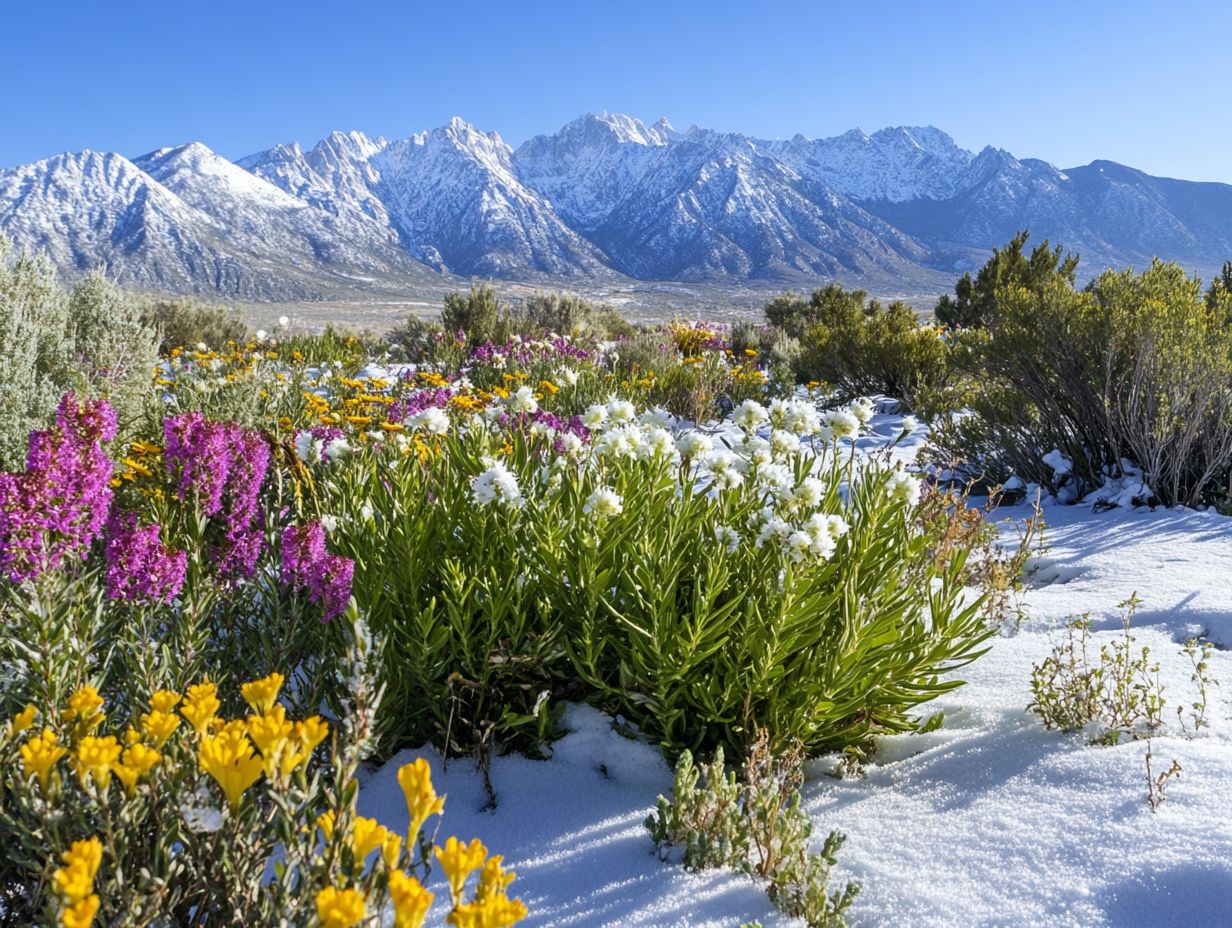
- Native plants thrive in cold climates due to their adaptability and resilience, making them an ideal choice for landscaping. Understanding the USDA Hardiness Zone which shows the lowest temperature a plant can tolerate of your area is key.
- Incorporating native plants in your landscape benefits the environment and saves on maintenance costs.
- Caring for native plants in cold climates requires proper maintenance and protection to ensure their survival and longevity.
Understanding Cold Climate Native Plants
Understanding cold climate native plants is essential for any gardener aiming to cultivate resilient and sustainable landscapes, especially in regions like Montana and Ohio.
These remarkable plants uniquely adapt to flourish in challenging environments marked by brief growing seasons and the risk of late cold snaps. By prioritizing hardy perennials, frost-tolerant annuals, and biennials, along with self-sown annuals, you harness the power of local natives to create vibrant, colorful gardens.
This not only enhances your outdoor space but also supports local biodiversity and promotes ecological balance in your area.
What Makes a Plant Suitable for Cold Climates?
A plant s suitability for cold climates hinges on its resilience to frigid temperatures, often assessed through USDA Hardiness Zone ratings.
Cold climate plants commonly showcase valuable traits like drought resistance and frost tolerance, allowing them to thrive even under challenging conditions. This adaptability is particularly beneficial for gardeners in regions with unpredictable weather patterns.
Furthermore, the ability to adjust to fluctuating temperatures and varying soil types ensures these plants not only survive but truly flourish. By choosing tough plants celebrated for their robust nature, you cultivate resilient landscapes that remain strong and vibrant through the chillier months.
Benefits of Using Native Plants
Embracing native plants in your garden offers a wealth of advantages, particularly in regions like Montana, where unique environmental conditions call for adaptability. These resilient plants, including varieties like lavender and beach balm, flourish with minimal upkeep and play a vital role in supporting local ecosystems by attracting pollinators and providing essential habitats for wildlife.
Native plants, such as Centaurea and Digitalis, typically demand fewer resources like water and fertilizers making them an economical choice for cultivating sustainable gardening practices.
Start planning your cold climate garden today!
Environmental and Cost Benefits
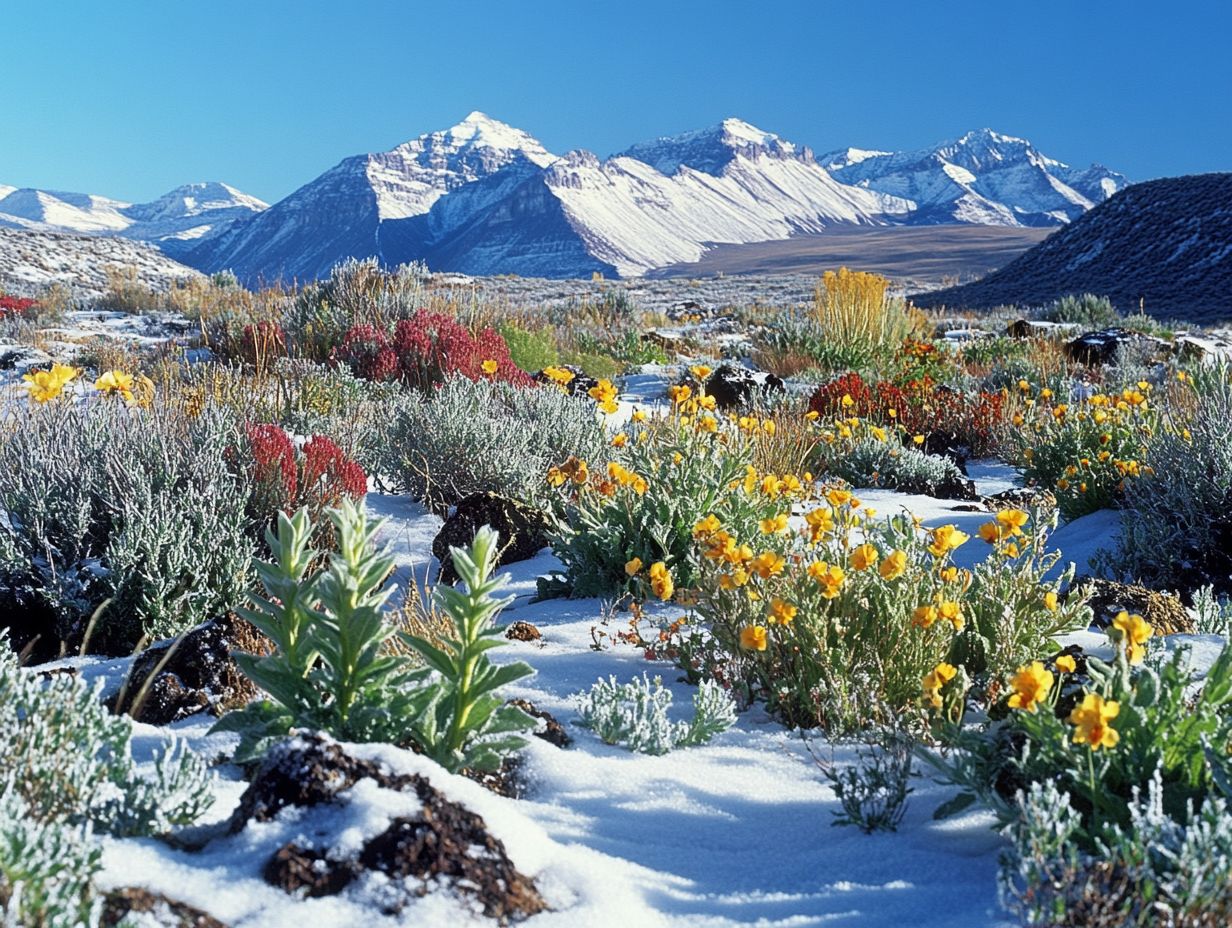
Native plants offer significant environmental and cost benefits. They are an exceptional choice for eco-conscious gardening because they require less water and are naturally adapted to your local soils and climates.
This adaptability helps in keeping the soil moist, which is crucial for promoting healthy ecosystems. Utilizing cover plants can further enhance this effect. By minimizing reliance on synthetic pesticides and fertilizers, native plants play a vital role in reducing chemical runoff, protecting local waterways and biodiversity.
Organizations like the Native Plant Society champion these eco-friendly choices, highlighting the importance of fostering regional wildlife habitats. Native plants typically demand lower maintenance; they are more resilient to pests and diseases. This means you can enjoy reduced labor and resource expenditures.
Choosing native plants not only saves you money but also positively impacts the environment. They are the ideal option for those passionate about sustainable gardening and growing local natives.
Amazing Native Plants for Your Cold Climate Garden!
When selecting native plants for cold climates, hardy perennials, along with frost-tolerant annuals and biennials, are your best allies. Their remarkable adaptability and resilience make them perfect for your garden. To discover more about suitable options, check out the best sources for cold-climate seeds. In regions like Montana, consider integrating robust plants such as bearded irises, lavender Munstead, and beach balm.
These selections not only thrive in harsh conditions but also enhance the visual appeal of your garden. Adding wild lilac and other local plants will boost biodiversity, creating a vibrant native garden that invites beneficial wildlife to thrive alongside you.
Hardy Trees and Shrubs
Hardy trees and shrubs are essential for your cold climate gardening. Species like Ilex and Viburnum provide structure and year-round interest to your landscape while serving as vital habitats for wildlife.
In regions like Montana, where winters can be particularly unforgiving, choosing the right plant species is crucial for successful growth and sustainability. Varieties such as the resilient Eastern Red Cedar and the adaptable Serviceberry not only endure frosty temperatures but also offer stunning autumn foliage and berries that attract local birds.
The Sugar Maple is another standout, showcasing breathtaking fall colors. Evergreens like the Colorado Blue Spruce maintain their lush greenery throughout the snowy months. These tough plants love well-drained soil and can flourish in full sun to partial shade, making them excellent choices for creating vibrant, eco-friendly gardens in colder climates.
Cold-Adapted Flowers and Ground Covers
Cold-adapted flowers and ground covers are your go-to choices for crafting a stunning garden in colder climates. They bring vibrant color and texture while also enhancing soil stability and moisture retention.
These resilient plants thrive in harsh winter conditions, making them invaluable for landscapes that withstand the elements. By selecting hardy perennials like asters and sedum, or self-sown annuals such as snapdragons, you can enjoy reliable blooms without extensive upkeep.
For maintenance, consider mulching to protect roots from frost and using drip irrigation to conserve water. These low-maintenance gems attract beneficial pollinators, enriching your garden ecosystem. By opting for these cold-hardy selections, you ensure a flourishing yard and positively impact the local environment.
How to Incorporate Native Plants in Your Landscape
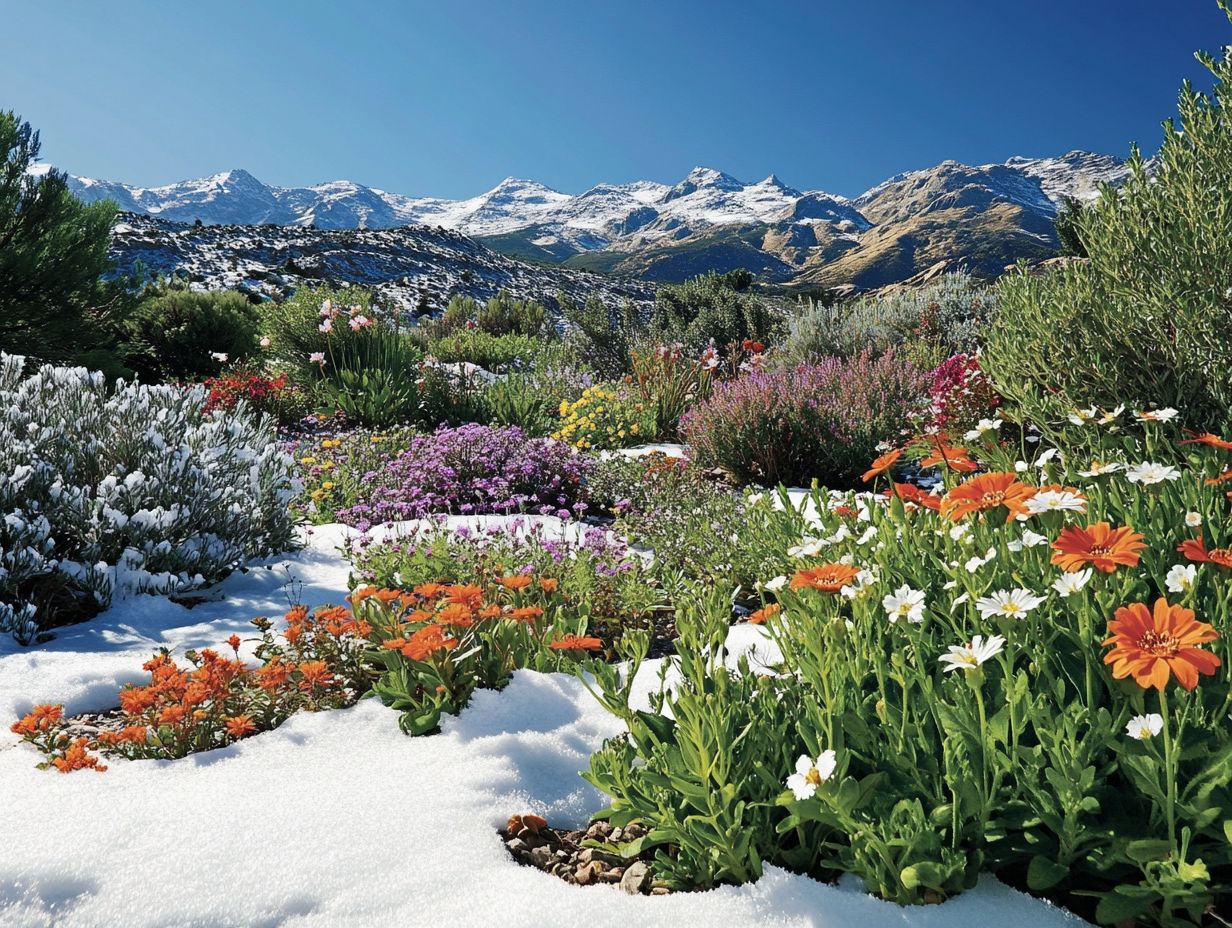
Incorporating native plants into your landscape design requires careful planning and a keen understanding of plant characteristics, spacing, and overall aesthetics. This effort can create a harmonious and vibrant native garden that flourishes beautifully in your local climate.
Design Tips and Techniques
Effective design tips for using native plants, especially Sage, can enhance your garden’s visual appeal and ecological benefits. This is especially true in challenging climates like Montana.
In cold areas, selecting plants that can both survive and thrive is crucial. Layering creates visual interest; place taller plants in the back and let shorter varieties fill the front.
Color coordination creates a pleasing look that lasts through the seasons. Use similar foliage colors or textures for a more unified appearance.
Cluster plants together rather than spreading them out. This approach makes your garden feel lush and inviting while boosting biodiversity.
Caring for Native Plants in Cold Climates
Caring for native plants in cold climates requires a keen understanding of their unique needs. Pay special attention to factors such as soil moisture, maintenance routines, and protection against harsh weather conditions, including unexpected late cold snaps.
Proper Maintenance and Protection
Proper maintenance and protection of native plants are essential for their survival and health, especially in cold climates like Montana. Frost tolerance and being tough against the elements are key.
Implementing effective maintenance practices can significantly enhance their ability to endure harsh winter conditions. For instance, regular pruning shapes the plants and removes dead or damaged wood, promoting better air circulation and reducing the risk of disease.
Timely fertilization with organic amendments can strengthen the plants, supplying essential nutrients that elevate their overall vitality.
Pest management techniques, such as introducing beneficial insects or using organic repellents, are essential for minimizing stressors that could jeopardize their health during frost periods. Local resources, like the native plant society, offer invaluable guidance on these practices, providing community workshops and expert advice to help you optimize your care strategies.
Frequently Asked Questions
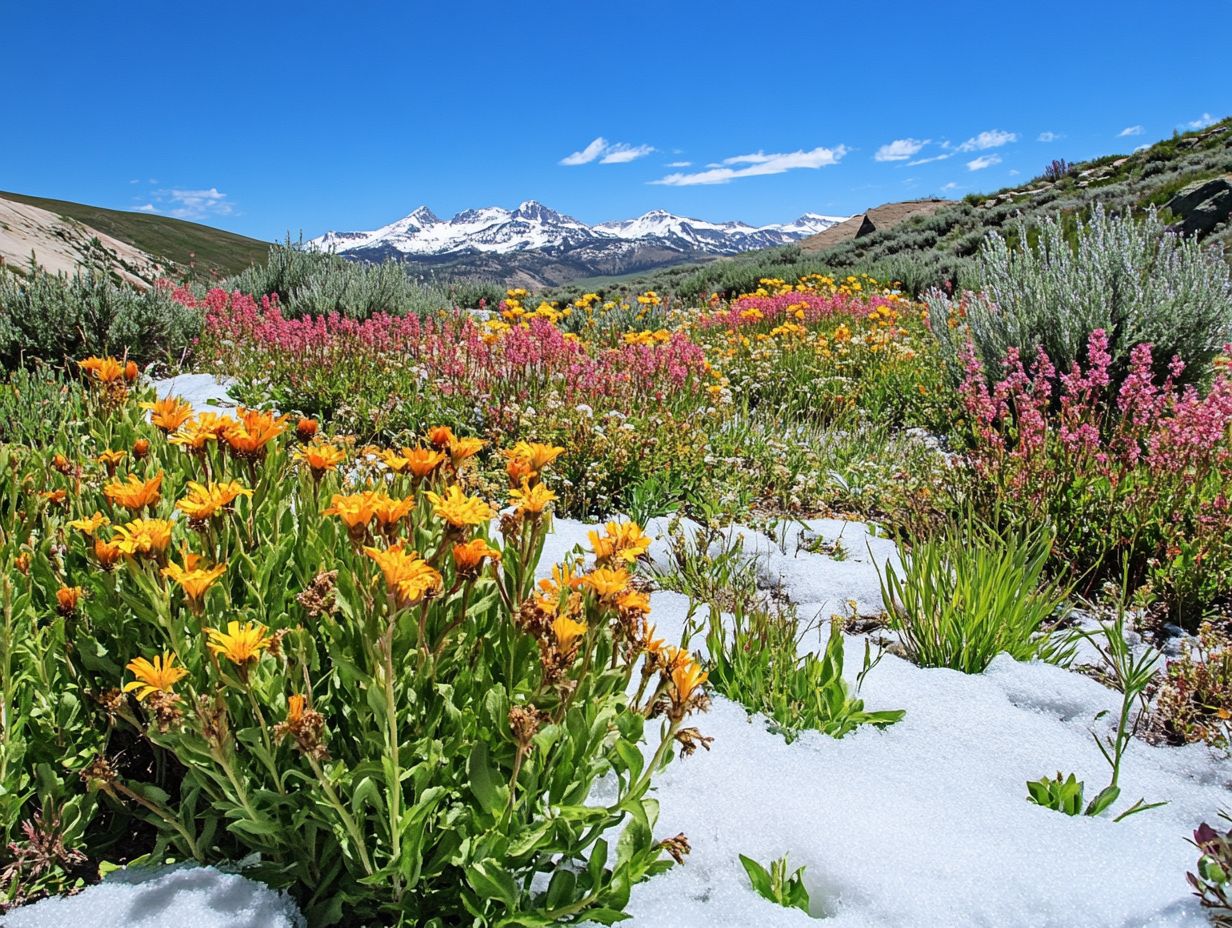
What are the Best Native Plants for Cold Climates?
Native plants are an exciting choice for cold climates because they are naturally adapted to survive in these conditions.
Why should I choose native plants for my cold climate garden?
Native plants are a low-maintenance and sustainable option for your garden. They are well-suited to the local climate and help support local ecosystems.
What are some examples of native plants for cold climates?
Some popular native plants for cold climates include coneflowers, blueberries, and wintergreen. You can also consult with a local gardening center for specific recommendations, including bearded irises, lavender Munstead, and what is the best soil for cold-climate gardens.
Do native plants require any special care in cold climates?
Native plants are hardy and can thrive in cold climates. However, during their first year, it’s crucial to mulch and water them to help them establish strong roots.
Be aware of late cold snaps, which can harm tender species.
Can native plants attract wildlife to my cold climate garden?
Yes! Native plants can draw in a variety of wildlife, like birds and butterflies. This adds beauty and biodiversity to your garden.
Incorporating tough plants such as Sage and Cosmos can enhance this attraction.
Are there any benefits to using native plants in cold climates?
Native plants require low maintenance and support local ecosystems. Their deep roots prevent erosion and improve soil health.
These plants also reduce the need for extra watering, conserving water resources in your garden.

